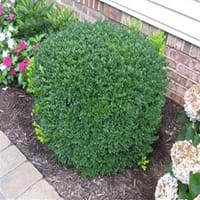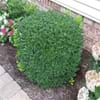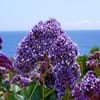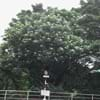Life Span
Perennial
Perennial
Type
Broadleaf Evergreen
Bulb or Corm or Tuber
Origin
Hybrid origin
Hybrid origin
Types
Not available
Not Available
Habitat
Anthropogenic, meadows, Slopes
tropical environments
USDA Hardiness Zone
6-9
8-11
AHS Heat Zone
Not Available
Not Available
Habit
Oval or Rounded
Clump-Forming
Flower Color
Green, Light Yellow
White, Red, Light Pink
Flower Color Modifier
Bicolor
Bicolor
Fruit Color
Not Available
Green, Brown
Leaf Color in Spring
Green, Dark Green
Green, Dark Green
Leaf Color in Summer
Dark Green
Light Green
Leaf Color in Fall
Dark Green
Several shades of Green
Leaf Color in Winter
Dark Green, Bronze
Light Green
Leaf Shape
Oblong elliptic
Long Linear
Plant Season
Spring, Summer, Fall, Winter
Spring, Summer, Winter
Sunlight
Full Sun, Partial Sun, Partial shade
Full Sun, Partial Sun
Type of Soil
Loam, Sand
Loam, Sand
The pH of Soil
Acidic, Neutral
Acidic, Neutral
Soil Drainage
Well drained
Well drained
Bloom Time
Spring
Not Available
Tolerances
Pollution
Deer resistant
Where to Plant?
Container, Ground, Pot
Container, Ground, Pot
How to Plant?
Seedlings
Divison, From Rhizomes, Tubers
Plant Maintenance
Medium
Low
Watering Requirements
Keep ground moist, Keep immersed in water, Medium
Average Water Needs
In Summer
Lots of watering
Lots of watering
In Spring
Moderate
Moderate
In Winter
Average Water
Average Water
Soil pH
Acidic, Neutral
Acidic, Neutral
Soil Type
Loam, Sand
Loam, Sand
Soil Drainage Capacity
Well drained
Well drained
Sun Exposure
Full Sun, Partial Sun, Partial shade
Full Sun, Partial Sun
Pruning
Remove damaged leaves, Remove dead branches, Remove dead leaves
Cut or pinch the stems, Remove damaged leaves, Remove dead branches, Remove dead leaves
Fertilizers
10-10-10
as it is a flowering plant, use high phosphorous content fertilizer, Nitrogen, Phosphorous, Potassium, Requires high amount of nitrogen
Pests and Diseases
Blight, Leaf spot, Leafminer, Mites, Psyllids
Aphids, Grasshoppers, Mealybugs, Mites, Red blotch, Slugs, Snails
Plant Tolerance
Pollution
Deer resistant
Flowers
Insignificant
Showy
Flower Petal Number
Not Available
Not Available
Edible Fruit
No
Not Available
Fragrant Flower
Yes
Not Available
Foliage Texture
Fine
Medium
Foliage Sheen
Glossy
Glossy
Attracts
Flying insects, Insects
Bees, Butterflies, Hummingbirds
Allergy
Itchiness, Skin irritation
poisonous if ingested
Aesthetic Uses
Bonsai, Decorating walls, Landscape Designing, Mass in beds, Mixed Border, Showy Purposes, Used for decorating walls, fences, gates, hedges, etc., Used for making hedges
Beautification, Bouquets, Cottage Garden, Showy Purposes
Beauty Benefits
Not Available
Not Available
Environmental Uses
Air purification, Food for animals, Food for birds
Not Available
Medicinal Uses
Not Available
Not Available
Part of Plant Used
Not Available
Flowers
Other Uses
Used as Ornamental plant, Used for Landscaping
Used as Ornamental plant, Used for bedding in gardens
Used As Indoor Plant
No
Yes
Used As Outdoor Plant
Yes
Yes
Garden Design
Container, Edging, Foundation, Hedges, Rock Garden, Wall
Container, Cutflower, Houseplant, Mixed Border, Tropical
Botanical Name
BUXUS 'Green Velvet' COPF
HIPPEASTRUM 'Picotee'
Common Name
Green velvet boxwood
Florist Amaryllis, Hippeastrum, Picotee Hippeastrum
In Hindi
Green velvet boxwood
HIPPEASTRUM
In German
Grüner Samt boxwood
HIPPEASTRUM
In French
Vert velours buis
HIPPEASTRUM
In Spanish
boj terciopelo verde
Hippeastrum
In Greek
Πράσινο πυξάρι βελούδο
Hippeastrum
In Portuguese
buxo veludo verde
HIPPEASTRUM
In Polish
Green Velvet bukszpan
Hippeastrum
In Latin
Carl viridis praetoriola
Hippeastrum
Phylum
Tracheophyta
Magnoliophyta
Class
Magnoliopsida
Magnoliopsida
Order
Buxales
Asparagales
Family
Buxaceae
Amaryllidaceae
Clade
Angiosperms, Eudicots
Angiosperms, Monocots
Tribe
Not Available
Not Available
Subfamily
Not Available
Amaryllidoideae
Season and Care of Green Velvet Boxwood and Hippeastrum
Season and care of Green Velvet Boxwood and Hippeastrum is important to know. While considering everything about Green Velvet Boxwood and Hippeastrum Care, growing season is an essential factor. Green Velvet Boxwood season is Spring, Summer, Fall and Winter and Hippeastrum season is Spring, Summer, Fall and Winter. The type of soil for Green Velvet Boxwood is Loam, Sand and for Hippeastrum is Loam, Sand while the PH of soil for Green Velvet Boxwood is Acidic, Neutral and for Hippeastrum is Acidic, Neutral.
Green Velvet Boxwood and Hippeastrum Physical Information
Green Velvet Boxwood and Hippeastrum physical information is very important for comparison. Green Velvet Boxwood height is 60.00 cm and width 60.00 cm whereas Hippeastrum height is 38.10 cm and width 30.10 cm. The color specification of Green Velvet Boxwood and Hippeastrum are as follows:
Green Velvet Boxwood flower color: Green and Light Yellow
Green Velvet Boxwood leaf color: Green and Dark Green
Hippeastrum flower color: White, Red and Light Pink
- Hippeastrum leaf color: Green and Dark Green
Care of Green Velvet Boxwood and Hippeastrum
Care of Green Velvet Boxwood and Hippeastrum include pruning, fertilizers, watering etc. Green Velvet Boxwood pruning is done Remove damaged leaves, Remove dead branches and Remove dead leaves and Hippeastrum pruning is done Cut or pinch the stems, Remove damaged leaves, Remove dead branches and Remove dead leaves. In summer Green Velvet Boxwood needs Lots of watering and in winter, it needs Average Water. Whereas, in summer Hippeastrum needs Lots of watering and in winter, it needs Average Water.





